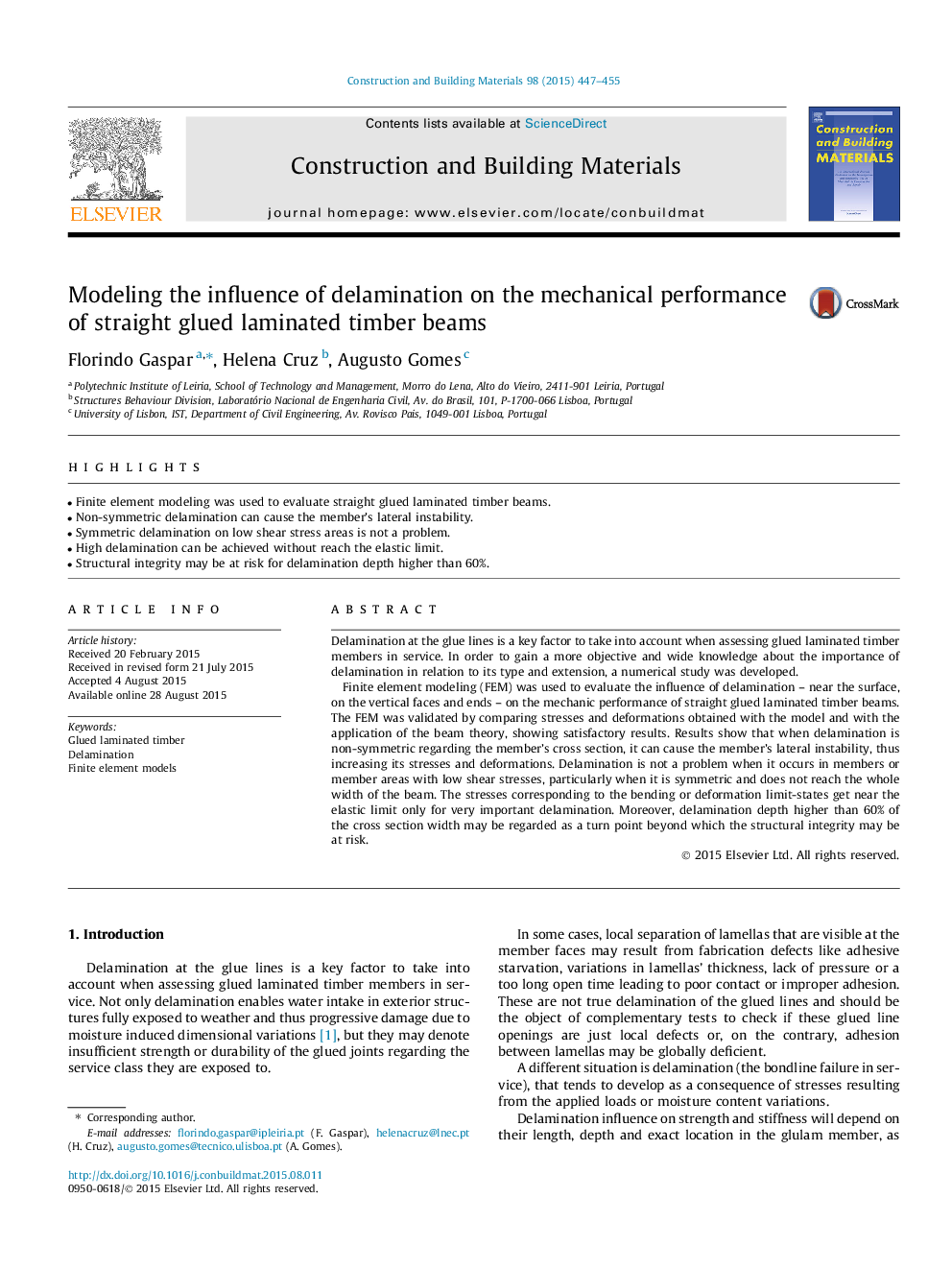| Article ID | Journal | Published Year | Pages | File Type |
|---|---|---|---|---|
| 256617 | Construction and Building Materials | 2015 | 9 Pages |
•Finite element modeling was used to evaluate straight glued laminated timber beams.•Non-symmetric delamination can cause the member’s lateral instability.•Symmetric delamination on low shear stress areas is not a problem.•High delamination can be achieved without reach the elastic limit.•Structural integrity may be at risk for delamination depth higher than 60%.
Delamination at the glue lines is a key factor to take into account when assessing glued laminated timber members in service. In order to gain a more objective and wide knowledge about the importance of delamination in relation to its type and extension, a numerical study was developed.Finite element modeling (FEM) was used to evaluate the influence of delamination – near the surface, on the vertical faces and ends – on the mechanic performance of straight glued laminated timber beams. The FEM was validated by comparing stresses and deformations obtained with the model and with the application of the beam theory, showing satisfactory results. Results show that when delamination is non-symmetric regarding the member’s cross section, it can cause the member’s lateral instability, thus increasing its stresses and deformations. Delamination is not a problem when it occurs in members or member areas with low shear stresses, particularly when it is symmetric and does not reach the whole width of the beam. The stresses corresponding to the bending or deformation limit-states get near the elastic limit only for very important delamination. Moreover, delamination depth higher than 60% of the cross section width may be regarded as a turn point beyond which the structural integrity may be at risk.
